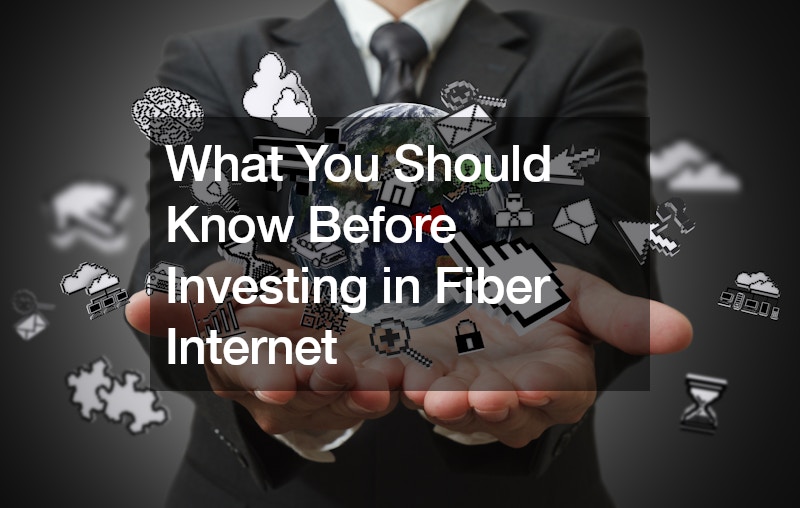

Investing in fiber internet is a significant decision for both individuals and businesses, as it involves evaluating various factors to determine if it’s the right fit for your connectivity needs. Fiber-optic internet is renowned for its high-speed, reliability, and the bandwidth it offers, making it a superior choice for high-demand users. Here are the key considerations you should take into account before making this investment.
1. Understanding the Technology
Fiber internet uses fiber-optic cables, which transmit data as light signals over long distances with minimal loss in signal quality. This technology allows for faster data transfer rates compared to traditional copper cables used in DSL or cable internet.
Fiber cables are less susceptible to interference and can deliver symmetrical upload and download speeds—important for activities like streaming high-definition videos, online gaming, and uploading large files.
2. Assessing the Cost
Initially, fiber internet can be more costly than other types of connections. The installation may involve fees, especially if new fiber lines need to be laid down in your area. Monthly charges may also be higher, though you often receive significantly greater speeds and better reliability. Evaluate the pricing plans of different service providers and consider the long-term benefits versus the upfront costs. Some providers might offer promotions or bundled services that can provide more value for your investment.
3. Availability in Your Area
One of the most significant factors is the availability of fiber-optic service in your location. Fiber internet is not accessible everywhere, with urban and newly developed areas more likely to be serviced than rural ones. Check with local and national internet service providers (ISPs) to see if they have existing fiber infrastructure near your residence or office. If fiber is not currently available, find out if there are plans to expand service to your area in the near future.
4. Comparing Providers
Not all fiber services are created equal. It’s vital to compare the packages offered by different ISPs. Look at the speed tiers, data caps (if any), contract obligations, and the quality of customer service. Reading customer reviews and seeking recommendations can provide insight into the reliability and customer satisfaction of each provider.
5. Evaluating Your Needs
Consider how much internet speed you actually need based on your daily activities. For households or businesses with multiple users who simultaneously stream videos, play online games, or use cloud-based applications, higher speeds might be necessary. However, for basic browsing or light streaming, more affordable and lower-tier fiber plans may suffice.
6. Future-Proofing Your Connection
Investing in fiber internet is also about future-proofing your connectivity. As more devices become internet-capable and technologies such as 4K/8K streaming and virtual reality become mainstream, having a robust internet connection will become increasingly important. Fiber internet is well-suited to handle upcoming innovations and increased data needs.
Watch the video above to learn more about fiber internet in Shelby, OH and nearby areas!.
